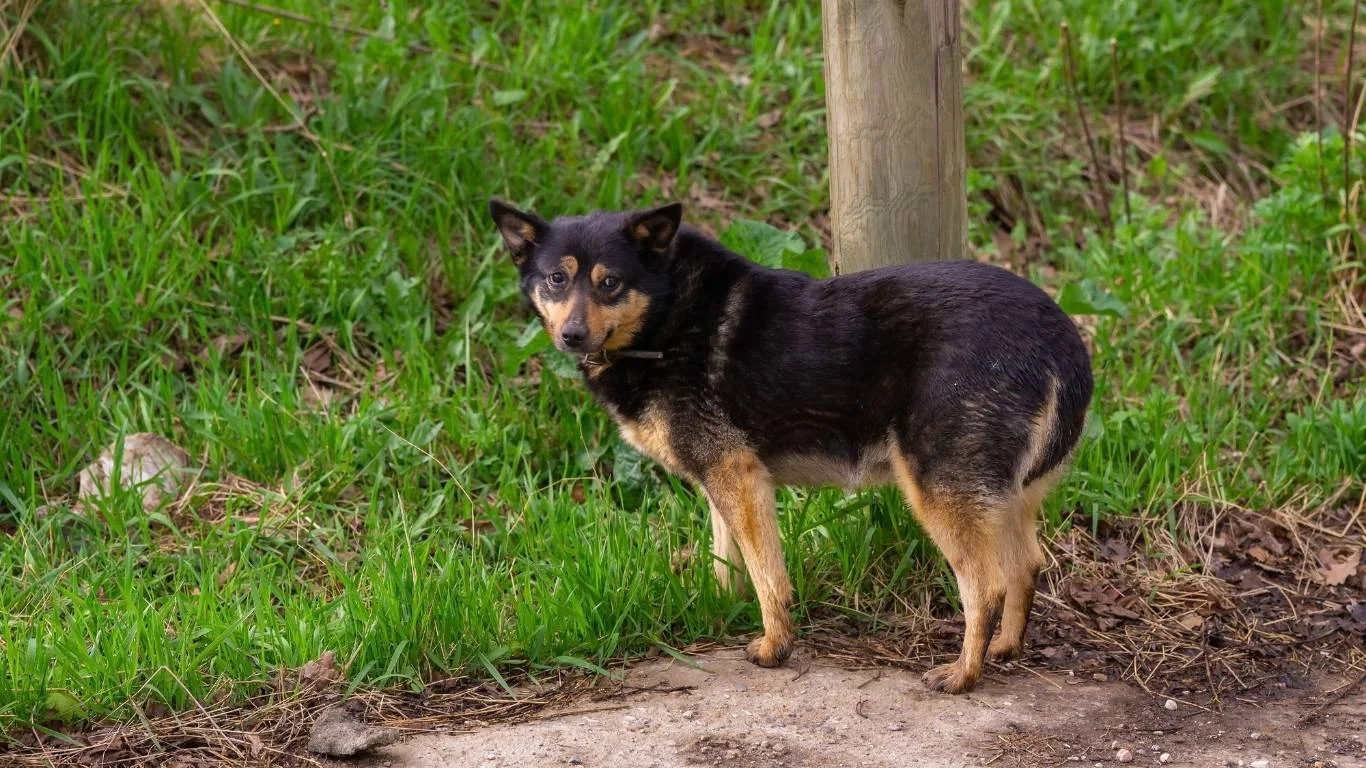What Does Blood in a Dog’s Vomit Mean? Urgent Signs Every Owner Should Know
If you’ve ever asked yourself, what does blood in a dog’s vomit mean?, you’re definitely not alone—and trust me, you’re right to be concerned. As someone who has worked closely with veterinarians for years, especially in cases involving nutrition and gastrointestinal issues, I’ve seen firsthand how unsettling it can be when your pup throws up something reddish or dark brown. It’s not just gross—it can be downright scary. While it’s tempting to panic, it’s also the perfect time to slow down, observe, and gather information. Some causes are minor, while others can be serious. Let’s unpack this together and help you figure out when it’s an emergency and when you might be able to breathe a little easier.
Common Reasons for Blood in a Dog’s Vomit

Seeing blood in your dog’s vomit is alarming, but not all cases are life-threatening. That said, anytime you spot blood—whether bright red or looking like coffee grounds—it’s a sign that something’s going on that needs your attention. From my time working in vet clinics, these were some of the most common causes I encountered:
1. Dietary indiscretion (aka “garbage gut”)
Dogs eat all kinds of stuff they shouldn’t—like table scraps, spoiled food, or who-knows-what from the backyard. When their digestive system reacts to something irritating, vomiting with blood may follow. Think of it like their GI tract saying, “Nope, not today.”
- Symptoms: Vomiting (with or without blood), diarrhea, lethargy
- What to do: Withhold food for a few hours, offer water, and call your vet if it persists or the vomiting is severe.
2. Gastritis or inflammation of the stomach lining
This one’s a biggie. Inflammation of the stomach lining can result from infections, eating something toxic, or even stress. I’ve seen dogs come in with upset stomachs after moving to a new home or even just switching food too quickly.
Bright red blood in vomit usually means the bleeding is fresh and likely from the upper GI tract. If it looks like coffee grounds, it could be older blood from deeper down.
3. Parasites or infections
Yep, creepy crawlies can absolutely cause blood in vomit. Hookworms, for example, can lead to internal bleeding, especially in puppies or dogs with weaker immune systems. I remember one case where a rescue pup had both worms and giardia—poor thing had it rough, but treatment turned him around fast!
- Bring a stool sample to your vet for analysis.
- Follow up with deworming meds or antibiotics if prescribed.
4. Toxic substances
If your dog ingests rat poison, certain houseplants, or even some over-the-counter medications (like ibuprofen—never give this to dogs!), blood in the vomit might be one of the first signs. These cases are always emergencies. I’ve seen dogs bounce back from poisoning with fast intervention, but timing is everything.
5. Ulcers
Just like people, dogs can get ulcers too. These are open sores on the stomach lining that can bleed. They’re often caused by long-term NSAID use (pain meds) or stress. One of our older canine patients had chronic arthritis and ended up with ulcers from extended medication use—it was a wake-up call to monitor more closely.
Understanding the Appearance of the Blood

Not all blood looks the same, and its appearance can tell us a lot about what’s happening. Here’s a breakdown based on what we often observed in the clinic:
- Bright red blood: Usually fresh, and likely from the esophagus, mouth, or upper stomach. Think recent trauma or irritation.
- Dark brown or “coffee ground” texture: This suggests the blood has been in the stomach for a while—digestive acids may have broken it down. Could mean ulcers or something more chronic.
If your dog’s vomit also includes things like undigested food, grass, or foam, those details help paint a bigger picture. When clients brought samples (gross but helpful), it was easier to piece together what was going on.
When Should You Worry? Know the Emergency Signs

Okay, so not every case of blood in vomit is life-threatening, but some absolutely are. These are the signs I always told pet parents to watch out for:
- Vomiting multiple times in a row (especially with blood)
- Bloody diarrhea or black, tarry stools (called melena)
- Severe lethargy or collapse
- Swollen abdomen or signs of pain when touched
- Pale gums or difficulty breathing
If your dog shows any of these signs, don’t wait. Go to an emergency vet ASAP. I can’t count how many times a quick decision made all the difference.
Tip from My Experience:
If you can, take a quick photo of the vomit before cleaning it up. I know, not the most glamorous advice, but it can really help your vet understand what’s going on—especially if there’s blood involved. One pet parent showed me a photo, and it was exactly what we needed to fast-track treatment.
What Your Vet Will Look For (And Ask You)

When you walk into the vet’s office and say, “My dog is throwing up blood,” the team is going to move fast—but they’ll also start asking you a ton of questions. From my experience working in veterinary clinics, I can tell you that the more detailed you are, the better. It helps us connect the dots way quicker.
Here’s what your vet will probably want to know:
- How long has this been going on? One-time thing or ongoing?
- What did the vomit look like? Bright red? Dark? Mucusy? Chunky?
- Has your dog eaten anything unusual? Think food scraps, bones, toxic plants, socks—seriously, we’ve seen it all.
- Any recent changes? New diet, medication, stress, travel?
- Is your dog acting normally otherwise? Eating, drinking, pooping okay?
I always tell pet parents to jot this stuff down or snap pictures if possible. Even bringing a small baggy with a vomit sample (if you can stomach it) can be helpful. Gross, I know—but super useful!
Tests Your Vet May Recommend

Once your vet has a basic history, they’ll likely want to run a few diagnostic tests to figure out the root cause. These are the ones I’ve seen most commonly used in cases involving blood in vomit:
1. Blood Work
Seems obvious, right? Blood panels can give insight into organ function, hydration status, and signs of infection or anemia (which might happen if there’s internal bleeding). In one case I worked on, we caught a low red blood cell count early, which pointed to a bleeding ulcer. Lifesaver, literally.
2. Fecal Exam
Even if the issue seems to be with vomiting, parasites and GI bugs often show up in poop too. I can’t tell you how many times a fecal test revealed something unexpected, like hookworms or giardia.
3. X-rays or Ultrasound
If there’s a suspicion that your dog swallowed something weird (like a toy or sock), or if your vet thinks there might be tumors or internal bleeding, imaging helps. I remember one pup that swallowed a corn cob—yep, a whole one. It caused a blockage and bleeding, but we caught it fast thanks to an x-ray.
4. Endoscopy or Biopsy
These are more advanced, but sometimes necessary—especially if ulcers, cancer, or chronic inflammation are suspected. They allow the vet to look directly inside your dog’s stomach or intestines, and sometimes even take tissue samples.
Can Nutrition Help Dogs with Digestive Bleeding?

Here’s where my nutrition focus really comes in. After the acute issue is treated—whether it’s an infection, toxin, or ulcer—your dog’s diet plays a huge role in recovery. The gut needs to heal, and certain foods can help soothe inflammation and support overall GI health.
Some tips from my hands-on experience:
- Bland Diet First: Think boiled chicken and white rice for a day or two. Simple, easy to digest, and gentle on the stomach.
- Gradual Reintroduction: Don’t rush back to kibble. Slowly introduce your dog’s regular food or switch to a sensitive-stomach formula.
- Probiotics Matter: A quality probiotic can help restore gut flora, especially after vomiting or antibiotics. We had one client’s lab who bounced back dramatically after we added a canine probiotic to her recovery plan.
- Avoid Known Irritants: If your dog has had recurring stomach issues, steer clear of common irritants like fatty foods, dairy, or certain grains. Some pups even react to beef or chicken—always worth checking with your vet if food sensitivity might be in play.
Foods to Consider (Ask Your Vet First):
- Prescription GI formulas like Hill’s i/d or Royal Canin Gastrointestinal
- Homemade bland meals: boiled turkey, pumpkin, plain oatmeal
- Supplements with slippery elm or L-glutamine (for gut repair)
Just don’t wing it on your own—some “safe” foods for humans can be toxic to dogs (onions, garlic, etc.). When in doubt, always check.
Preventing It From Happening Again

Okay, so once your pup is on the mend, let’s talk prevention. No one wants to go through that stress again—trust me, I’ve held the paws of more than a few scared pups and worried owners. Here’s what you can do to help keep your dog’s digestive system on track:
- Pet-proof your house: Keep trash cans covered, food out of reach, and don’t leave things like socks or chewable objects lying around.
- Stick to a consistent diet: Sudden food changes can upset your dog’s tummy. Transition new foods slowly over a week.
- Watch the treats and table scraps: Even “healthy” human foods might not agree with your dog. I once saw a dog react to a tiny piece of spicy sausage—it was enough to irritate his gut for days.
- Regular check-ups: Especially for older dogs or those with known health issues. Routine exams can catch issues before they escalate.
Hydration is Key
When dogs vomit—especially if there’s blood involved—they lose fluids fast. Always make sure they have access to clean, fresh water. In some cases, your vet might even suggest subcutaneous fluids (I’ve helped administer these in-clinic—it’s like an IV under the skin, and it can really help).
One trick I share with dog parents at work is offering ice cubes if their pup won’t drink. It’s gentler on the tummy, and most dogs think it’s a treat!
Recovery Timeline: What to Expect After Treatment

Once your dog’s been diagnosed and treated for the cause of blood in their vomit, the big question becomes—how long until they’re back to their tail-wagging self? Honestly, it varies. From my experience working closely with veterinarians, recovery depends on what caused the issue and how quickly it was addressed.
If it was something relatively mild like gastritis or dietary indiscretion, you might see improvement in as little as 24 to 48 hours with supportive care. On the other hand, conditions like ulcers or toxin ingestion can take weeks to resolve, and they require ongoing monitoring, sometimes even follow-up bloodwork.
Typical Recovery Milestones:
- Day 1–2: Vomiting should decrease or stop, appetite might slowly return.
- Day 3–5: Energy levels begin to bounce back, stool returns to normal.
- Week 2+: For more serious cases, you might need a follow-up exam or additional testing.
In one memorable case I assisted with, a German Shepherd named Duke had severe gastritis from sneaking a huge chunk of leftover brisket off the kitchen counter (no joke). He was back to himself in a week, but only after fluids, meds, and a strict bland diet. The owners were shocked at how fast it escalated—and how fast he bounced back once we nailed the treatment.
Can Stress Cause Blood in a Dog’s Vomit?

Oh, absolutely. Stress is sneaky and way more influential in dogs than most people realize. Just like in humans, stress in dogs can wreak havoc on the gut. We often see dogs come in after a boarding stay, a big move, or even a new pet in the house—and suddenly they’re vomiting, sometimes with traces of blood.
Stress-induced gastritis is real. The stomach lining gets irritated, sometimes even ulcerated, and that’s when bleeding can start. Dogs prone to anxiety (like rescue pups or certain breeds) tend to be more sensitive.
Signs Your Dog Might Be Stressed:
- Pacing or whining
- Hiding or avoiding family members
- Changes in appetite or sleep
- Vomiting or diarrhea (sometimes with blood)
To help ease stress, I often recommend enrichment toys, puzzle feeders, and calming pheromone diffusers. And don’t underestimate the power of routine—dogs love consistency. If your dog’s GI upset seems to flare around stressful events, it’s worth mentioning to your vet.
Can Blood in Vomit Be a Sign of Cancer?
This is a heavy one, but it’s something we need to talk about. In older dogs especially, blood in vomit can sometimes be linked to tumors in the GI tract. It’s not the most common cause, but I’ve seen it happen, and early detection can make a big difference.
Cancers like gastric carcinoma or lymphoma may bleed, and vomiting can be a symptom—along with weight loss, decreased appetite, and lethargy. If your vet suspects something serious, they might recommend advanced imaging or a biopsy. These aren’t cheap or easy decisions, but they do give answers.
In one heartbreaking case, we had a senior Labrador who had chronic vomiting episodes for months. The family thought it was just sensitive stomach issues, but an endoscopy revealed a tumor. They opted for palliative care, and he had a few more happy months with his people—still wagging his tail, still sneaking snacks.
Let’s Recap: What Does Blood in a Dog’s Vomit Mean?
By now, you’ve probably gathered that there’s no one-size-fits-all answer to the question: what does blood in a dog’s vomit mean? It can range from the relatively harmless to the downright serious. The key takeaway? Don’t ignore it. Even if your dog seems fine otherwise, blood is always a signal worth checking out.
Here’s a quick summary:
- Bright red blood = fresh bleeding, possibly from the upper GI tract
- Dark, coffee-ground blood = older bleeding, often deeper in the stomach
- Causes include everything from minor dietary indiscretions to ulcers, parasites, toxins, or even cancer
- Your vet will likely recommend blood work, fecal exams, and possibly imaging
- Nutrition and stress management play a huge role in recovery and prevention
Helpful Resources
- PetMD – Great for researching symptoms and treatments
- AKC – Breed-specific health insights and behavior tips
- NIH – Reliable info on medical research including veterinary parallels
- Health.com – For learning about stress, inflammation, and wellness
Disclaimer
This article is based on my personal experience as a veterinary assistant and is meant for informational purposes only. It does not replace professional veterinary advice, diagnosis, or treatment. If your dog is vomiting blood, always consult a licensed veterinarian immediately.
Remember, you know your dog better than anyone. If something feels off, it probably is. Better safe than sorry.






